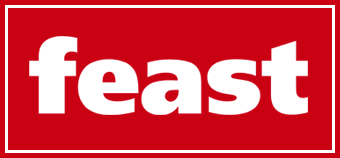In the United States, financial institutions, fintech firms, and even non-financial businesses are feeling the pressure to identify and stop illegal activities associated with money laundering, terrorism financing, and fraud. Watchlist screening is one of the most vital compliance tools in this battle. The process will help organizations to remain in line with domestic and international regulations as well as protecting their reputations and customers.
What is AML Watchlist Screening in the U.S.
The essence of AML watchlist screening is to screen customers, partners, and transactions against government and international lists of prohibited individuals, organisations, and politically exposed persons. These government watchlists are stored by organizations such as the U.S. Department of the Treasury, Office of Foreign Assets Control (OFAC), FBI and international regulatory organizations.
The role of this process has become very important in recent years. The U.S. Treasury reports that the fines imposed on non-compliance with the sanctions legislation can be up to millions of dollars, which is why financial institutions cannot afford to ignore a comprehensive watchlist screening procedure.
Why Watchlist Monitoring is Important
Screening is not a single event. Compliance is effective when there is watchlist monitoring, i.e., when there are constant checks because watchlists are often updated. Leaked watchlist data has shown how the absence of compliance can result in billions of dollars of illegal money entering the legal financial systems.
To illustrate, investigative journalists in the United States have claimed that screening procedures that are outdated allow sanctioned persons to circumvent checks and this poses a risk to both banks and corporations.
Such continuous tracking is particularly important because government watchlists are updated every day, sometimes with new sanctions against individuals related to geopolitical conflicts, organized crime, or cyber threats. The time lag of just a few hours in updating screening tools can pose a great risk to organizations.
The Watchlist Screening Process
An effective watchlist screening process usually consists of three important steps: data collection, screening and review. The first is that customer and transaction data should be collected correctly. This is then followed by real time screening against the relevant U.S. and international databases. Lastly, potential matches should be examined to see whether they are actual risks or false positives.
In the United States, regulators anticipate a risk based approach. This implies that companies have to customize their screening procedures based on their customer base, volume of transactions and exposure to high-risk jurisdictions. As an example, a bank with international customers will need a more thorough screening than a small local credit union.
The Effects of Global Watchlist Leaks
Among the emerging challenges that compliance officers have had to face is the leakage of global watchlists. Such leaks expose confidential data and expose gaps in the management of sanctions data by organizations.
In 2021, U.S. media investigations of leaked global sanctions data revealed that a number of financial institutions had not effectively incorporated government watchlists into their compliance systems, resulting in millions of dollars of suspicious transactions being missed.
Not only do such incidents erode confidence in the financial system but they also face regulatory attention and huge fines. To U.S. institutions, it is a wakeup call that the use of obsolete screening techniques can no longer keep abreast with the current threats.
Government Watchlists and Regulatory Expectations
Government watchlists are not merely databases, but rather enforcement mechanisms that have important legal consequences. The OFAC, as an example, has sanctions that limit the activities of U.S. persons and businesses in doing business with the listed persons or organizations. Non-compliance may lead to criminal prosecution, reputation, and financial losses.
In 2022 alone, OFAC fined U.S.-based companies more than $42 million due to sanctions compliance failures. These examples demonstrate how correct watchlist screening and subsequent regulatory avoidance are directly connected.
The Future of Watchlist Screening in the U.S.
With the changing financial environment, AML watchlist screening will become even more important. Artificial intelligence and machine learning are advancing and are now being used to minimize false positives, increase accuracy and uncover latent relationships among entities Compliance officers in the U.S. are also embracing technology-based solutions that can keep up with new regulatory changes in real-time.
Furthermore, the emergence of digital banking and cryptocurrency transactions is likely to see regulators crack down on screening and monitoring. This is expected to widen the horizon of compliance obligations and the watchlist screening process will become a permanent priority of all institutions that operate within the U.S. financial system.
Conclusion
The U.S. financial sector is one that is under a state of continuous regulatory reform and increased global risk. An effective watchlist screening coupled with continuous watchlist monitoring is no longer an option, but a necessary safeguard of compliance, security, and trust. By being proactive and keeping up with changing sanctions, as well as mitigating the risks that have been revealed by the leaks of global watchlists, U.S. institutions can better defend themselves against potentially crippling fines. The bottom line is that a proactive approach to AML watchlist screening helps businesses comply with not only the U.S. government watchlists but also the international best practices in compliance, making the financial system safe to everyone.



